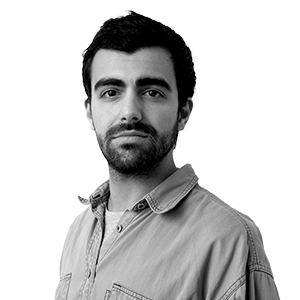Sílvia Osuna: "I'm fortunate to be able to conduct the research I enjoy in Catalonia."
Researcher at the Institute of Computational Chemistry and Catalysis (IQCC) of the University of Girona


BarcelonaSilvia Osuna (Castellón de Empúries, 1983) a researcher at the Institute of Computational Chemistry and Catalysis (IQCC) at the University of Girona has won the IX Banco Sabadell Foundation Award for Science and Engineering for her advances in the computational design of enzymes with applications in the pharmaceutical industry.
What exactly does your line of research involve?
— Enzymes are biomolecules in our bodies that accelerate the chemical reactions we need to live. Molecules that accelerate chemical reactions are called catalysts, and enzymes are the best catalysts we know of. In the lab, we work to develop new computational tools capable of predicting how to modify them or what new enzymes to generate to do what we want.
Can you give us an example?
— Yes, we modify them or generate new ones to give them new functions, expand their range of action, or improve a chemical reaction. For example, there are diabetes medications that are manufactured using an enzyme, which humans evolved to generate a chemical reaction that would benefit patients with this disease. The vast majority of pharmaceutical industries today use enzyme catalysts at some stage of drug production.
Is it easy to transfer this knowledge to the industry?
— There's a lot of interest from companies, and we've had quite a few collaborations because it's a more sustainable way to make medicines, but enzyme design is complicated and expensive. There are some chemical reactions necessary for life that would take millions of years to complete without enzymes. Our research focuses on the computational side; that is, we use simulations and different strategies to determine what changes we need to make to these enzymes so they can perform the desired reaction on an industrial scale.
Before entering the pool, check if there is water.
— Exactly. If we can computationally develop protocols capable of predicting the success of the changes we make to enzymes, we don't need to do so many tests in the lab. Let's look at what we're leaving behind and try to improve it. Recently, we've also had a lab, and we perform the experimental validations ourselves.
And what can be done with this technology in the future?
— For now, what we're doing is designing an enzyme to be able to manufacture a drug that people will then take, and any drug today can be manufactured this way.
And will you continue to carry out this research in Catalonia?
Yes, I went to the University of California, Los Angeles, in 2008 to do my thesis, as there was a boom in computational enzyme design at the time, but I was able to return with a Marie Curie fellowship in Girona. There are many people who have left and can't return. We should believe in this more and invest more in research. But yes, I'm one of the lucky ones to be able to pursue the research I love in Catalonia.
Alberto García-Basteiro
Associate Research Professor at ISGlobal - Hospital Clínic
"It is unacceptable that a carefully managed infectious disease is the one that causes the most deaths."
Researcher Alberto García-Basteiro (Vilalba, 1982) has won the 20th Banco Sabadell Foundation Award for Biomedical Research for his work on tuberculosis. He is an associate professor at the Barcelona Institute for Global Health (ISGlobal) and the Hospital Clínic, and the coordinator of tuberculosis research at the Manhiça Health Research Center (CISM) in Mozambique, where he has worked since 2013. In this country, as in many others in sub-Saharan Africa, tuberculosis is one of the main health problems. The center has several lines of research to quantify the tuberculosis epidemic, improve its diagnostic capacity, and develop new vaccines.
"It is unacceptable that a diagnosable, preventable, and curable infectious disease is the one that causes the most deaths today," argues the expert, who explains that many cases of tuberculosis in poor countries go undiagnosed and, if left untreated, can suffer a mortality rate of 70%. In 2023, 1.25 million people worldwide died from tuberculosis, including 161,000 people infected with HIV. García-Basteiro explains that in Mozambique, many cases have been found that are resistant to treatment due to improper use of drugs, which reduces the available therapeutic options, as they are more expensive, take longer, and have more side effects.
Given this scenario, the researcher lives with "great concern." the dismantling of the US agency USAID by the Donald Trump administration, because it funds a large number of cooperation programs. In fact, he asserts that they are already seeing the consequences of these cuts and is convinced that in the coming years there will be a higher incidence of the disease and more deaths. HIV and, "if it is no longer controlled, there will be much more tuberculosis," because there is a high level of co-infection. It's not the difficulties in accessing the healthcare system, but the system's reach to reach these patients.
